On this day in aviation history, December 18, 1940, the Curtiss SB2C Helldiver dive bomber made its first flight. Plagued with teething issues that held its entry into operational service back, the Helldiver would eventually see extensive use during the last half of the Pacific War against the Japanese Navy but was soon replaced with the introduction of new aircraft into the fleet after the war. Known by many names, from the “Big-Tailed Beast” (often shortened to the “Beast”) to the “Son-of-a-Bitch 2nd Class”, SB2C Helldiver remains an important case study for what went wrong, and what went right in the US Navy’s efforts to develop a new dive bomber for its carrier fleet.
By the late 1930s, Curtiss-Wright was no stranger to naval aviation, considering that it was the Curtiss A-1 Triad of 1910 that was the US Navy’s first airplane, and in the more than 20 years since, it had developed fighters, scout planes, and dive bombers. Curtiss was also no stranger to the name “Helldiver”, as it was used with the Curtiss F8C observation/attack aircraft and the Curtiss SBC dive bomber, which would be the last combat biplane flown by the US Navy. But by 1938, the US Navy looked to Curtiss again to replace the Douglas SBD Dauntless, which had only just gone into service. However, the Navy felt that a bigger dive bomber was necessary, especially if war were to break out in the Pacific against Japan. The proposal also gained interest from the US Marines and the US Army Air Corps, who added extra requirements. The resulting SB2C Helldiver would feature an internal bomb bay, folding wings, and was powered a 14-cylinder Wright R-2600 Twin Cyclone engine. Besides its bomb load, the new Helldiver prototype also had a power-operated turret for a rear gunner with a .30 caliber machine gun, while the pilot had four forward-firing machine guns (two in the wings, two in the nose, synchronized with the propeller). But even before the prototype was completed, wind tunnel tests demonstrated the need to redesign the wings to add more stability, and that similar modifications to the tail would be required.
The first example of the new Helldiver design, XSB2C-1 Bureau Number 1758, made its maiden flight on December 18, 1940, with chief test pilot H. Lloyd Child at the controls. The aircraft, however had a host of issues, from failures with the three-bladed propeller on the R-2600, to structural weaknesses, poor handling, directional instability, and bad stall characteristics. On February 8, 1941, the XSB2C-1’s engine failed on approach to Buffalo, and the resulting forced landing broke the back of the aircraft, which was repaired and back in the air three months later. The reconstruction of BuNo 1758 would see the lengthening of the aircraft’s nose, a redesign of the engine cowlings and cooling system, and the enlargement of the tail. However, on December 21, 1941, the aircraft was conducting diving tests when one of the wings and the tail broke off from the aircraft. Test pilot Baron Hulse was able to bail out, but the XSB2C-1 was completely destroyed.

Even before the loss of the first prototype, the US Navy already ordered the SB2C into production. Further trials were carried out using SB2C-1s. The lengthening of the aircraft also resulted in the addition of larger fuel tanks, and the -1s would have all their forward-firing armament mounted in the wings. Later models from the SB2C-1C onwards would replace the forward firing Browning .50 caliber machine guns for a pair of 20mm cannons and were fitted with four bladed propellers for their upgraded Twin Cyclone radial engines. Production was carried out primarily at a production plant Curtiss opened in Columbus, Ohio, which would end up producing over 5,000 Helldivers during the course of WWII. Additionally, Helldivers were built in Canada under license from Curtiss at the Canadian division of Fairchild Aircraft and with the Canadian Car and Foundry Company (CC&F). Fairchild Canada built 300 SBF Helldivers while CC&F would build 894 SBW Helldivers.
The SB2C was not accepted into operational with the US Navy until 880 modifications were made to the design, which entered service after the Grumman TBF Avenger, which did not go into development until 1940, two years after the SB2C’s start. Production issues ensured that the SB2C-1s were relegated to stateside duties. In addition to the Navy versions, the US Army Air Force adopted the Helldiver into service as the A-25 Shrike. 900 Shrikes were built at Curtiss’ St. Louis, Missouri plant and were distinguished by the omission of the Helldiver’s folding wings (save for the first ten examples), the removal of the tailhook, larger main wheels, the replacement of the hard rubber tailwheel for a pneumatic one, a new gunsight, longer exhaust stubs, and Army-specified radio equipment. By the time the Shrike was ready for combat, however, the Army Air Force had adapted fighters such as the Republic P-47 Thunderbolt to fill tactical bombing roles, and so the Army Air Force no longer needed a dedicated dive bomber. While many of the A-25s were transferred to the Marines to become SB2C-1As, those that remained in the USAAF were kept stateside as trainers and target tugs. Similarly, attempts to export the Shrike to the Royal Australian Air Force and the Helldiver to the Royal Navy’s Fleet Air Arm proved just as fruitless, with the Australians receiving only 10 of the intended production batch of 150 airframes, and of those ten only one example was briefly in service before it and the other nine examples delivered were transferred to American Army Air Force units.
The Helldiver would have its baptism by fire on November 11, 1943, when Bombing Squadron 17 (VB-17) launched an attack from USS Bunker Hill (CV-17) on the Japanese base at Rabaul, New Britian. The poor handling characteristics, which included dangerous stall characteristics at the same speeds for landing on carriers, combined with short range led to the implementation of the SB2C-3 and subsequent models such as the -4 and -5 variants that, while not eliminating the problems altogether, greatly improved the Helldiver’s range, durability, and power output. From 1944 to 1945, Helldivers flying off the US Navy’s Essex-class fleet carriers partook in battles over the Marianas, the Philippines, Taiwan (then called Formosa by the Americans) and Okinawa. They were also credited alongside TBF/TBM Avenger torpedo bombers with the sinking of the Japanese super-battleships Musashi and Yamato. They were also deployed in air attacks against military installations on the Japanese Home Islands, attacking airfields, communications and shipping, and were also used in patrols up to the official surrender from the Imperial Japanese government, and were among the many aircraft that flew over the official surrender ceremony hosted aboard the battleship USS Missouri on September 2, 1945.
However, the Pacific War also demonstrated that just as the Army Air Force had found that fighter aircraft could be deployed in tactic bombing raids, F6F Hellcats and F4U Corsairs flown by Navy and Marine aviators found success carrying equally heavy bomb loads against Japanese ground targets, and were better able to protect themselves from enemy fighters, and the advent of air-to-ground rockets allowed for precision attacks against surface targets while avoiding the need to near-vertical dives that created added stress on the airframes. At the same time, the Helldiver could still deliver ordnance with more precision against specific targets and had a greater range over a fighter carrying a similar bombload and were thus still key to naval air operations for the remainder of the war.

With the end of WWII, the US Navy retained its fleet of Helldivers in active duty until 1947, but others flew on with reserve units until 1950. Helldivers would continue their combat service abroad with the Greeks and the French. In Greece, the country had devolved into civil war between communist-led forces and the Kingdom of Greece. The American escort carrier USS Sicily delivered 48 SB2C-5s to the Royal Hellenic Air Force (RHAF) in 1949, who used them in counterinsurgency operations during the closing stages of the war, targeting opposing ground bases and transports. When the war ended in a victory for the royal forces, the RHAF kept some of their Helldivers operational until 1953.
The French Aeronavale flew SB2Cs from the surplus carriers Arromanches, Bois Belleau, and La Fayette (originally HMS Colossus, USS Belleau Wood, and USS Langley) in combat during the First Indochina War, where they provided air support to French forces during the Battle of Dien Bien Phu. Following the French defeat in Indochina, SB2Cs remained in use with the Aeronavale until 1958. In addition to Greece and France, both Portugal and Italy maintained SB2Cs in operational condition during the 1950s as well, with the Italians becoming the last to retire their Helldivers in 1959. Several examples were also operated by the Royal Thai Air Force and Royal Thai Navy during the 1950s.
Today, there are a few surviving Helldivers, mostly in the United States but with at least one in Greece and Thailand each (at the Hellenic Air Force Museum and the Royal Thai Air Force Museum, respectively). For around 50 years, only one example of the “Beast”, SB2C-5 BuNo 83589, was kept in airworthy condition by the Commemorative Air Force in Texas. But in the summer of 2024, two more examples, SB2C-5 BuNo 83393 and SB2C-1A BuNo 75552 made their first post-restoration flights from the Fagen Fighters WWII Museum in Granite Falls, Minnesota and the National Museum of WWII Aviation in Colorado Springs respectively. At least one more Helldiver, SB2C-3 BuNo 19075, is currently under restoration to airworthiness at the Yanks Air Museum in Chino, California.
While the Helldiver was certainly hampered by mechanical troubles, the “Big-Tailed Beast” would still play a vital role in the US Navy’s victory over Japan during the Second World War and remains a subject of discussion among WWII aviation enthusiasts to this day. With the total of airworthy Helldivers rising from one to three in just the span of a month in the past year, the Helldiver still has the opportunity to tell its own story, and those of the men and women who built, flew, and maintained them 80 years ago.
Today in Aviation History is a series highlighting the achievements, innovations, and milestones that have shaped the skies. All the previous anniversaries are available HERE










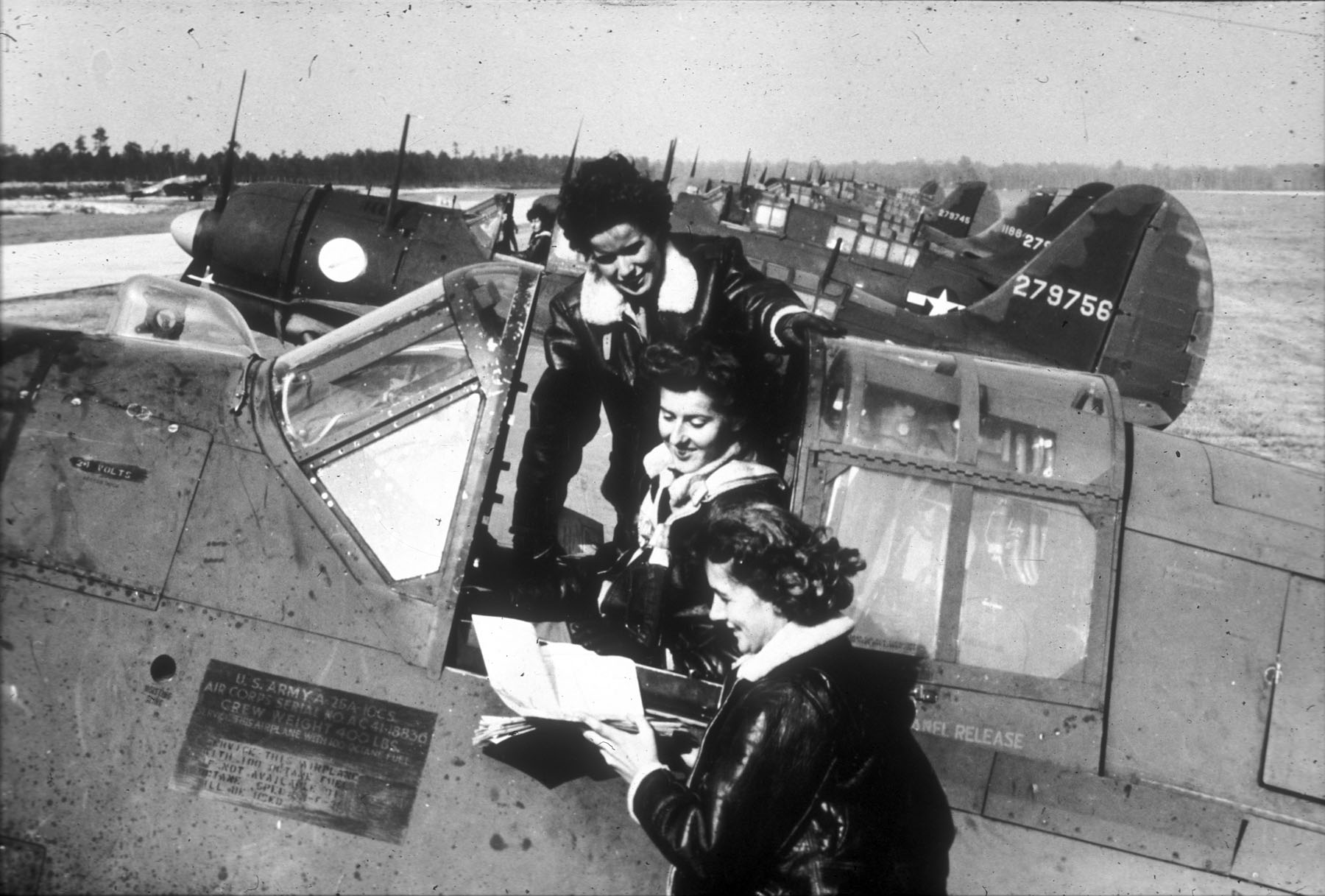



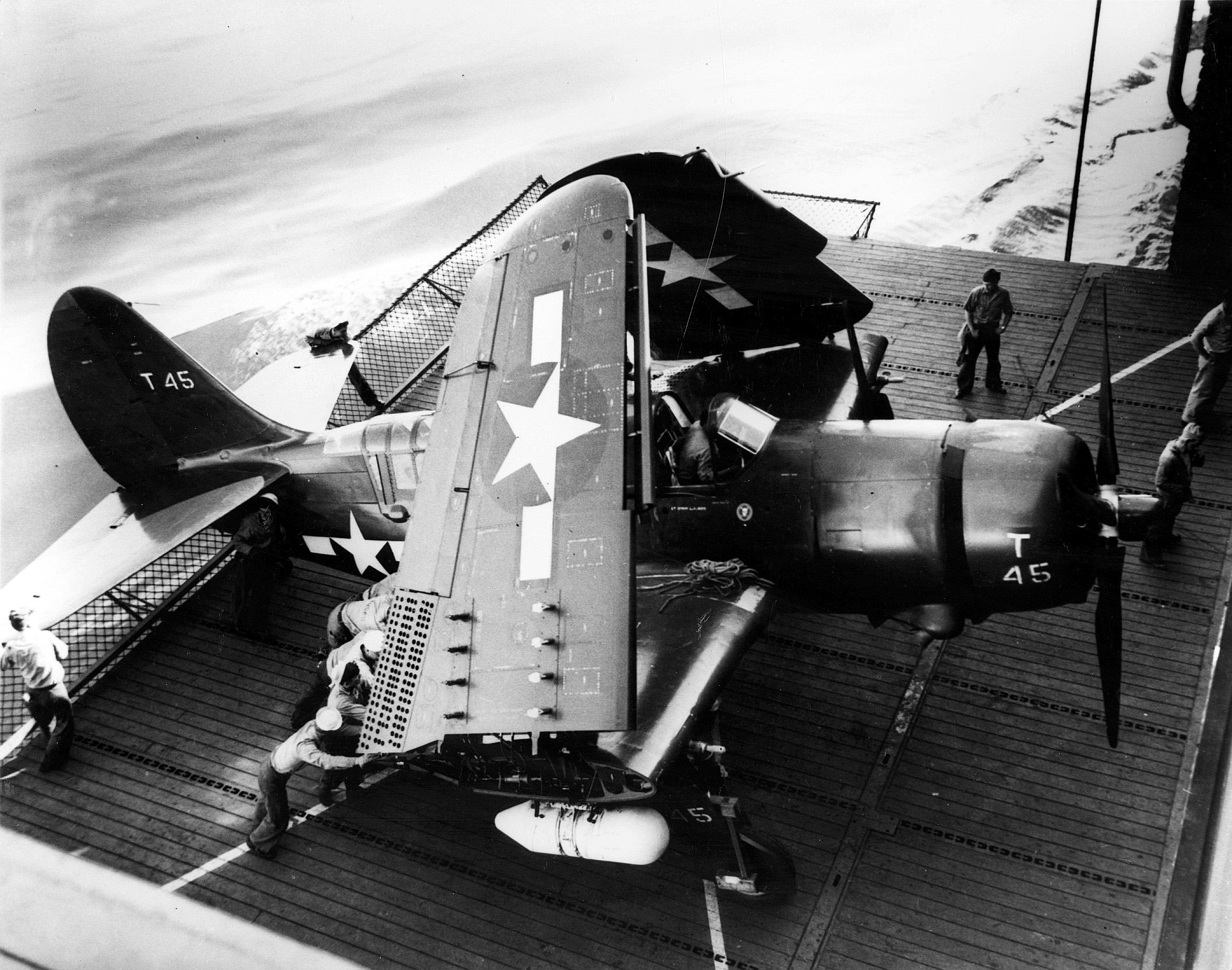





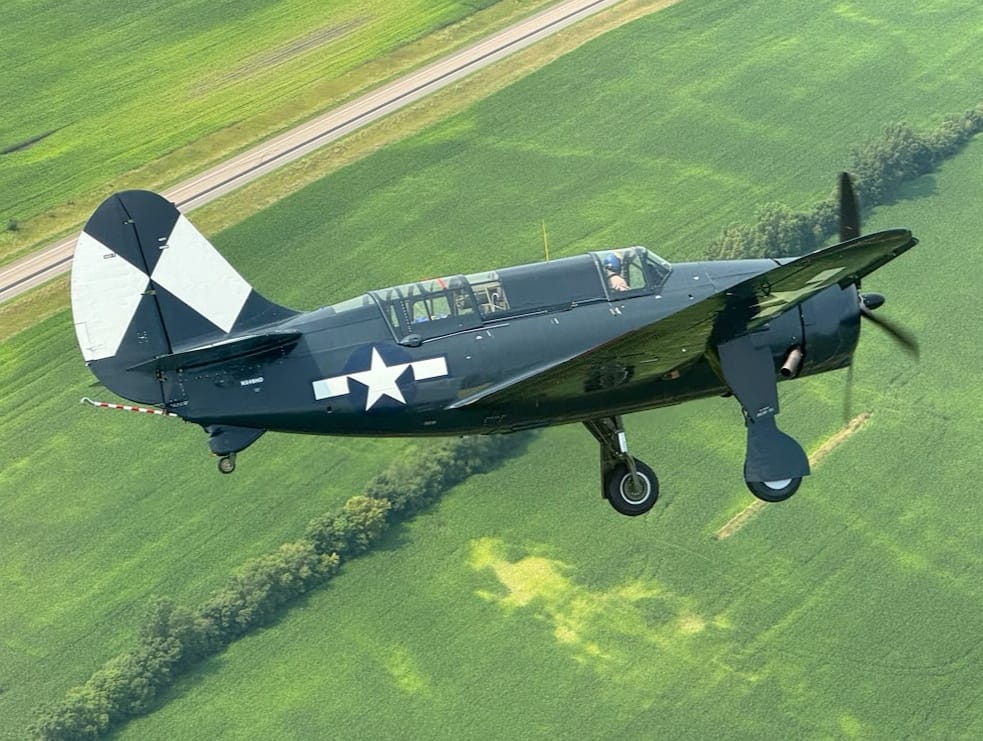





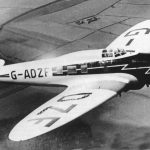









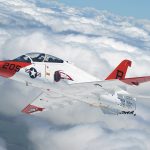



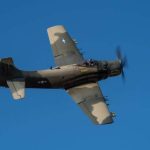




The prototype of the Beast, never had the turret installed, because, the Navy rejected it in favor of a single flexible .50 Cal gun in the rear cockpit.